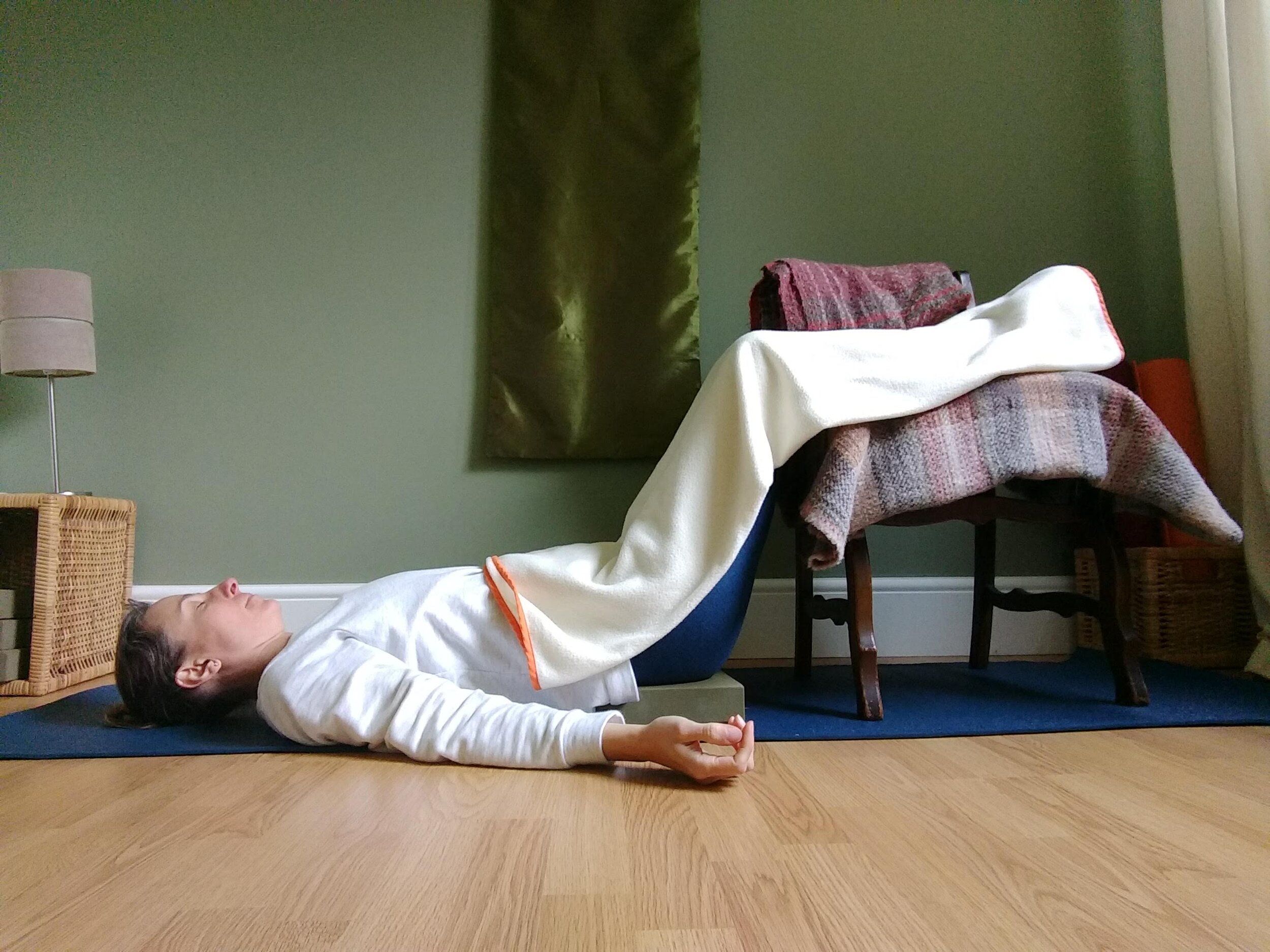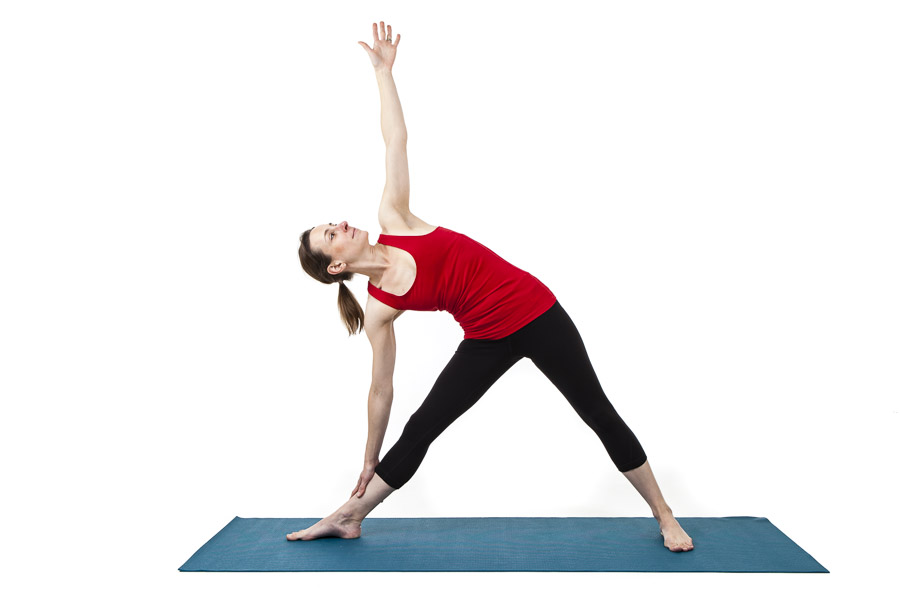Yoga for Deep Rest
Relax, Re-balance, Reset
Classes take place on the last Monday of each half term - 8pm - 9pm, Lach Dennis Village Hall
Or buy a pass to my online library and choose one of the many Deep Rest classes to do in your own home in your PJs (and then just ease into bed!)
“Receive the breath, receive the weight of the body, receive the moment. Give up ambition, give up movement, give up fear… and rest.”
My Yoga for Deep Rest classes are a wonderful blend of restorative yoga, yoga nidra, meditation and simple breath work designed to help your body and mind restore and rebalance.
During each session I will guide you into one or two restorative yoga poses to help the body to physically relax and release. Each pose is tailored to the needs of each individual student to ensure maximum comfort and ease. Poses are supported by cushions, blankets and any other yoga props available.
I will offer a yoga nidra practice in each session. Yoga Nidra is a guided, deep relaxation and meditation practice which is usually done lying down in a comfortable and warm position, but can also be done sitting. All my guided nidras offer choices and are designed to give an individual experience within a group environment.
The class is suitable for everyone aged 16+, no previous yoga experience is necessary.
“We sleep for a rich litany of functions, plural - an abundant constellation of nighttime benefits that service both our brains and our bodies. There does not seem to be one major organ within the body, or process within the brain, that isn’t optimally enhanced by sleep (and detrimentally impaired when we don’t get enough).”
We all need more rest. Achieving this, however can be very challenging for most of us, especially if you find it hard to relax, to fall asleep or to stay asleep. Yoga for Deep Rest classes aim to support your body to learn to relax fully, this helps the body and mind to become familiar with relaxation and thus over time the body may settle to sleep more easily.
If you find it hard to switch off this class is for you.
Anyone can enjoy this class. As a minimum you need a comfortable place to lie down – this could be on a bed or sofa or on the floor with cushions and blankets. That’s it. You then just listen. You can follow all of my guidance and be comfortably, happily aware of your body and mind at rest. You are welcome to drift in and out, and enjoy a period of rest with my support in the background. You can even choose to drift off to sleep. This class is about enabling you to let go of physical and mental stress and encourage your sympathetic nervous system (fight, flight freeze) to dial down and your parasympathetic nervous system (rest and digest) to dial up - promoting balance and helping you to reset.
“Taking time out each day to relax and renew is essential to living well ”
There is no guilt, laziness or indulgence in rest. It is not a luxury to rest, it is a necessity. We all know that we feel better when we’ve had good sleep or taken a day off. Yoga for Deep Rest is a way to develop relaxation and inspire you to make it part of your daily life. If you spend 20 minutes a day on social media, or watching TV you can spend 20 minutes resting!
Restorative Yoga and Yoga Nidra can be used as a supportive and healing practice for many things including:
relief of fatigue and tensions
insomnia
stress
anxiety
pain management
pregnancy and birth
mental health
self- enquiry
addiction
PTSD
Restorative Yoga and Yoga Nidra can result in more settled emotions, settled thoughts, improved productivity and creativity and even heightened intelligence. And even if you are not suffering from any of the above issues, the practice of restorative yoga and yoga nidra will support the maintenance of a balanced physical and mental state.
Join us!
More about Yoga Nidra
Yoga nidra means ‘yogic sleep’. It is an effortless, guided yoga relaxation and meditation practice that anyone can do, by themselves with an audio recording, or with the guidance of a teacher in person. It is usually done lying down in stillness using blankets and cushions as support. But you can practice sitting up if you wish.
Yoga nidra practices are on average around 20 minutes long but can be longer or shorter. Yoga Nidra brings you to a deeply relaxed state of mind and body, whilst you are still awake. You float between consciousness and unconsciousness being aware of the resting state of the body and mind as it is happening in the moment. This state between sleep and wakefulness is called the hypnogogic state in psychology.
“Within that state, guided visualizations help support the body to rest and recover, while the mind is settled and ordered, and the heart can open. ”
The practice promotes deep healing and very profound rest, physically, mentally and emotionally. It systematically enables the body to restore to a balanced state of homeostasis. As you progress through yoga nidra the body resumes optimal functioning of the digestive system, breath and heart rate – you can often hear rumbling as the gut relaxes, a settling into deep breathing and tensions fall away including headache.
Yoga nidra adapts to the needs of the individual. It optimises sensory perception, refines emotional intelligence and helps you to become happier no matter what issues you are dealing with.
“Even if you sleep – just lie down, cover yourself up... When you think you have no time – that’s the day you need to do it more than ever. Count up the minutes spent dithering and re-doing, listing and planning and procrastinating and failing and feeling like death and you’ll find that the time can be better used lying down to a yoga nidra. Even if the mental, emotional or physical energy makes it really uncomfortable and you’re bouncing and squirming between floor and blanket… the magic will happen. Clarity and calm will arise. Sanity remains or is restored. ”
More about Restorative Yoga
“Refuge is not running away, but choosing how you want to move forward. ”
Restorative yoga brings your body to a place of rest in a very supportive way. The use of cushions, blankets and yoga props such as a bolster and bricks (if you have them), even a chair or the wall ensure that we can rest without effort in gentle yoga positions. What we rest on is doing the work, rather than our bodies so it is a passive style of yoga rather than an active stretching style of yoga. The props enable each person to modify the position to suit their own body, and if a position doesn’t work for you, you simply choose one that does.
Restorative Yoga poses are held in comfortable support for between 5 and 20 minutes depending on the position of the pose. On average it takes 15 minutes for someone’s body to physiologically let go, and release, so longer held poses in particular enable the body to physically relax fully, through this naturally healing style of yoga.
I guide you in to your restorative poses, setting you up for relaxation and then I guide you out again. In-between I allow you space to just ‘be’ in the pose, to rest without interruption.
“To ‘rest’ deeply is to experience absolute relaxation, where there is effortless in stillness, quietness and peace.”
Breathwork and meditation to help calm the mind
I include short meditation and simple breathwork practices in my Yoga for Deep Rest classes for two reasons.
The first is to offer you tools and techniques that you can use anytime, anywhere to feel a little more balanced, centred and calm. Taking 1 minute, 5 minutes or longer to just breathe is invaluable throughout our day to calm our nervous system and help us to become more present with the things that we are doing. Simple meditation practices can work in the same way.
The second is because relaxation can be the hardest part of yoga class for many people who find their brain is very active and the thoughts just won’t switch off. Simple breathwork and meditation practices can help to give the mind focus and over time you will learn to calm the swirling of the mind. (Thinking doesn’t stop but you can learn to find the spaces in-between thoughts to rest). This can be helpful in particular for restorative poses where I guide you in and then allow you quiet time to just ‘be’ in the moment.
“Next time you get agitated because you are not growing/healing fast enough remember that every day does not need to be a step forward for it to be a success. Sometimes you need to slow things down to integrate new lessons and gather your energy. Rest is required on a long journey.”
To book a class click on the button below to take you to my booking system Punchpass.
Please fill in a booking form before you come to class you can find it by clicking the button below.









